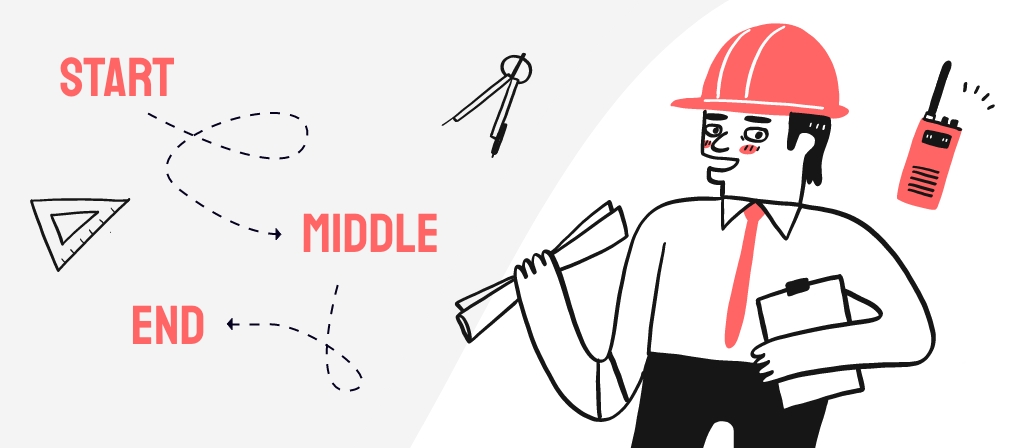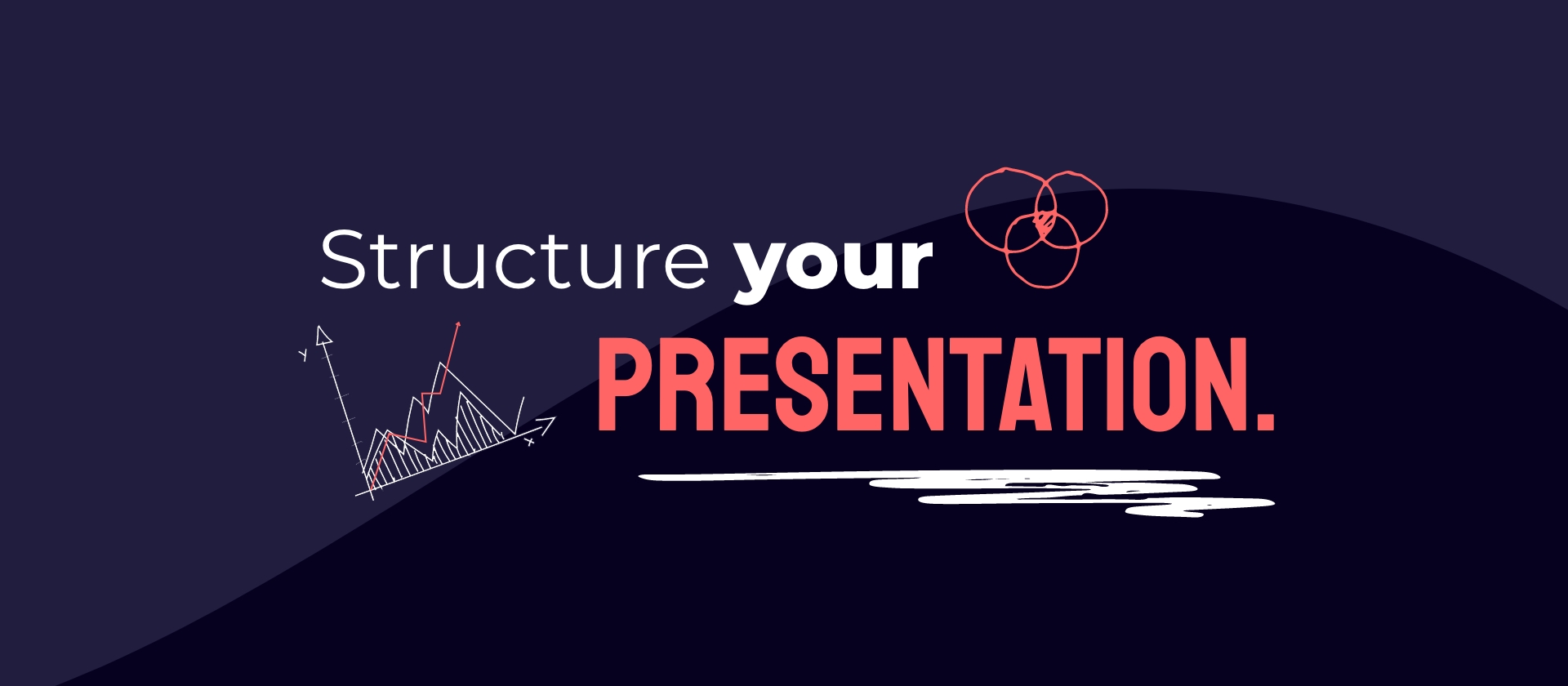Your content is the foundation of your presentation, and how you create and structure it can be the difference between audience engagement, and losing them before you’ve made it to the second slide.
Human beings love stories, it’s in our DNA. From that gossip you overheard in the bathroom, to the greatest movie ever made (Deep Blue Sea, obviously), when you hear a good story, you’re instantly immersed, enraptured and desperate to find out how it ends. When it comes to your presentations, why wouldn’t you want your audience hanging on your every word?
In this article, we’re going to walk you through the secret formula for creating and structuring your PowerPoint presentation content. In just a few easy steps, you can craft your most powerful presentation yet.
First things first, open PowerPoint.
Uh uh. That was a test. You failed already.
You shouldn’t be going anywhere near your chosen presentation software until your content, structure and narrative are perfect.
I know, I know, tricks are cruel. But we wanted to prove a point. There is no secret formula, and we’re not going to tell you exactly what to do, because creativity doesn’t work like that. And, if we did just tell you exactly what to do, your presentation content would be identical to all the others. We’re assuming you want to stand out from the crowd.
Even if you don’t consider yourself a creative person, in order to turn dry, uninspiring messaging into an engaging story, you’re going to have to flex some creative muscles. We’re not going to give you any step-by-step instructions to creating your PowerPoint presentation structure, we’re going to suggest a few eye-opening ideas, and creative exercises, to encourage your imagination to take it from there.
Sound good? Let’s get started. And, I promise, no more tricks.
Know your purpose
Here we go again, with the purpose chat. We know, you’ve got it by now. However, just in case you haven’t read any of our other storytelling blogs, we’ll go over it again. Once more for the seats in the back.
If you identify exactly what you want your audience to think, feel, or do, by the end of your presentation, you can work backwards and ensure every message in your presentation content points them towards that goal. Why are you standing up and speaking to this group of people? What is the change you want to make?
Once you know your purpose, you can keep checking in on your story, as it develops, and asking yourself “does this serve my purpose?”. If it doesn’t, you can edit or remove it completely.
Most people, when planning the structure of their PowerPoint presentation structure, have a rough idea of their purpose before they begin. Usually, the general outcome is included in the brief. Sell more products. Demonstrate our capabilities. Change how they see the industry. Which means you just need to work to understand why you do what you do. You don’t just sell products, you sell people their time back, through more efficient software, for example.
If your purpose hasn’t been laid out for you, and the brief is entirely open, you’re going to want to read this article before you continue, for some tips on choosing your presentation topic.

Know your audience
You know where you are, and where you want to be, but don’t forget who is going to get you there: your audience. They hold the key to your success, so you’re going to have to sweet talk them.
Understanding your audience is the most important part of any communication. Most people make the mistake of talking about themselves, and their presentation content comes from a purely selfish standpoint. And we get it, you’re proud of your product and all the clients who have had tremendous success from partnering with you. But your audience don’t care about your successes, they’re thinking about their own.
If you can’t prove to them that your product is the answer to their problems, they’ll stop listening pretty much straight away.
The first step to doing this, is to understand what their problems are. What do you know about the people who will be sitting across from you when it comes to the big day? What keeps them up at night? What do they dream of? What’s stopping them from achieving these dreams?
Once you understand their motivations, and their barriers for success, you can structure your PowerPoint presentation in a way that proves you get them, and you have the answers they’re looking for. This is how you define your key messages: audience challenges and your proposed solution.
The language of your presentation content
Who you’re speaking to will also dictate the language that you use to write your presentation content. While your tone of voice should always be authentically you, the level of detail you go into, and the specialist language you use, will be controlled by your audience’s existing knowledge.
You don’t want to pitch too low and insult their intelligence. But you don’t want to bombard them with jargon and lose them from sentence one.
As well as language, you also want to think about tone. How well do you know the people sitting across from you? Can you afford to be more conversational and friendly, or would they respond more positively to a corporate and professional tone?
The answer to all these questions lies in your research, so don’t skip the getting to know you part. One thing we can tell you about your audience is: they’re – most likely – human. And humans are storytelling animals.

Why structure your presentation content as a story?
Stories are easy for our brains. We consume stories every day of our lives. From the bedtime stories our parents would read us, to the books and movies we use to escape the ordinary, to the short, sharp visual stories told through intelligent advertising.
By structuring your presentation content as a story, you become the guide. You take your audience by the hand, introducing them to new and exciting concepts and persuading them that a better future is just around the corner, so long as they stick with you.
What does a story look like?
A story has to be a journey. And, for a presentation, it has to be one that’s easy to follow. Your audience aren’t going to put in work to understand your message. If it’s too convoluted, they’ll just stop listening.
This is where you start to add structure to your presentation’s key messages. Traditional stories are told in three parts: beginning, middle and end, so that’s a good place to start.

Presentation structure: Beginning
In the beginning, you set the scene and establish a connection with your audience by describing a situation they’re familiar with. Describe the current landscape, in brief, to make sure you’re all on the same page, showing them you understand the industry.
Give them a sneak peek into what’s in store. Set the level of expectation by sharing a condensed version of the agenda. We find summing up the journey they’re about to embark on in three themes does the trick. Humans find threes easy to cope with.
We’ve previously discussed ways to start a corporate presentation, but suffice to say there’s a wealth of options. The only limit is your imagination.
Presentation structure: Middle
The middle is where we explore the challenges you identifed during your audience research. Your audience might have one challenge, or 46, and it’s important to at least acknowledge each of them. That doesn’t mean you need to go into detail. By grouping challenges into larger themes, you can create a presentation structure that’s easy to follow, while comprehensively covering all their challenges.
For each challenge, you need to offer a solution. And you need to draw an obvious line between the challenge and your answer to it. Remember, they’re not going to work hard to join the dots in your presentation. It’s your job, as guide, to show them the way.
When planning out the ideas you want to cover during your presentation, here’s a piece of advice: don’t bite off more than you can chew. Don’t attempt to find a cure for cancer, achieve peace in the Middle East and resolve the riddle of what happens to odd socks in a single presentation. Three ideas – or even two, or one – answered satisfactorily will be far more effective than half a dozen ideas, half-answered in a half-baked fashion. Keep it lean.
Presentation structure: End
By the time you reach your final slides, you will have your audience emotionally hooked. Now you just need to appeal to the logical part of the brain.
There are numerous ways, such as case studies, client testimonials, procedure deep dives, or even showing how the technology actually works, that can add both logic and credibility to your argument. Whichever is relevant to your product, make sure you break the information down in an easy-to-understand format, and that it’s valuable to your audience.
Bring your presentation to a close with a summation of how much better their lives will be if they adopt your ideas. Reiterate your key points in brief. This is your culmination, your final opportunity to make your message heard. Tough, we know, that’s why we leave it up to our Storytellers.
Make sure your call to action is clear. You’ve done all the hard work, taking them on a journey and dropping breadcrumbs of change, so don’t miss this opportunity to tell them exactly how they make this change happen. Lay out how they take that first step towards a better future.
For your final slide, you need to end with impact. We’ve explored the intricacies of ending a presentation in this article. Yes, it needs its own post.
Once you’ve got the basics down, feel free to play with your narrative structure and get more creative with how you tell your story. Your key messages should remain the same, tailored to the needs of your audience, but you can mess with timelines to keep them guessing.
Don’t forget to edit your presentation content
Once you think you’ve got your perfect story, go back through and take the “so what?” test. For each of your key messages, ask why your audience should care. If you can’t come up with an answer, get rid of it.
Of course, editing also includes streamlining your ideas, to make sure you’re not repeating yourself, making sure all your messages point towards your end goal, and tidying up your script in terms of narrative flow.
We’re almost at the end of our own journey, and we haven’t even opened PowerPoint yet. Do you see how important it is to get your narrative tight, before you start messing with slide content? We’ve said it before and we’ll say it again: you are the star of your presentation, your slides are there to support you, and cement your ideas.
Go on then, open PowerPoint
It’s time to treat yourself and get working on your slides.
Each idea deserves its own slide, to give it space to breathe, and give your audience ample opportunity to digest what you’re saying. For more detail on splitting your messages across the perfect number of slides, read this blog.
On-slide presentation content
When we say presentation content, we do mean on-slide copy, as well as speaker notes, so we weren’t going to end this article without talking about the last piece of the puzzle.
Your on-slide copy needs to be minimal. Your audience can’t listen to you and read your slides at the same time, so remove the distractions and just pull out the most important points from your script, and put those on slide. This will support what you’re saying, aid comprehension and increase the chances that they’ll remember your messages.
The impact of these visual cues is enhanced when supported by imagery or iconography that also reinforces the message. But we’re in danger of moving on to design and animation now. If this has piqued your interest, feel free to continue your PowerPoint education by reading some more of our articles on these topics.

The best stories can use PowerPoint to drive the message home, but it’s you that’s the guide. The best way to not let your slides take over is to perfect your presentation content outside of presentation software. Only once your messaging, narrative and structure is right, should you even think about slides.


